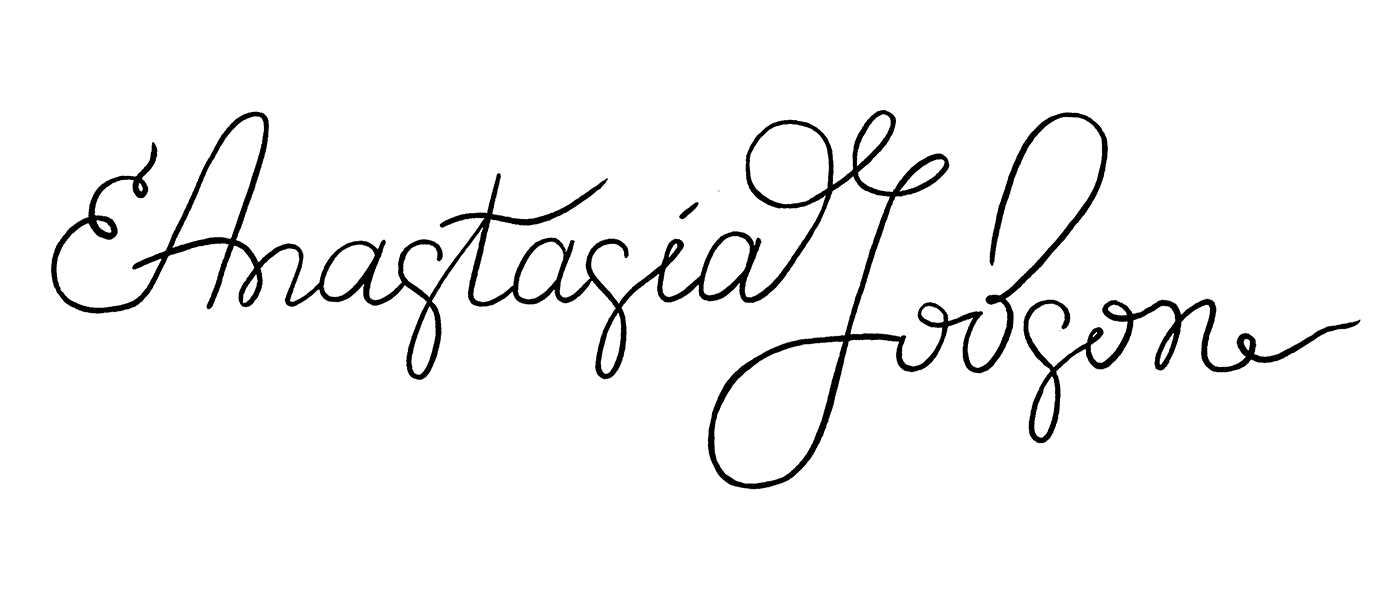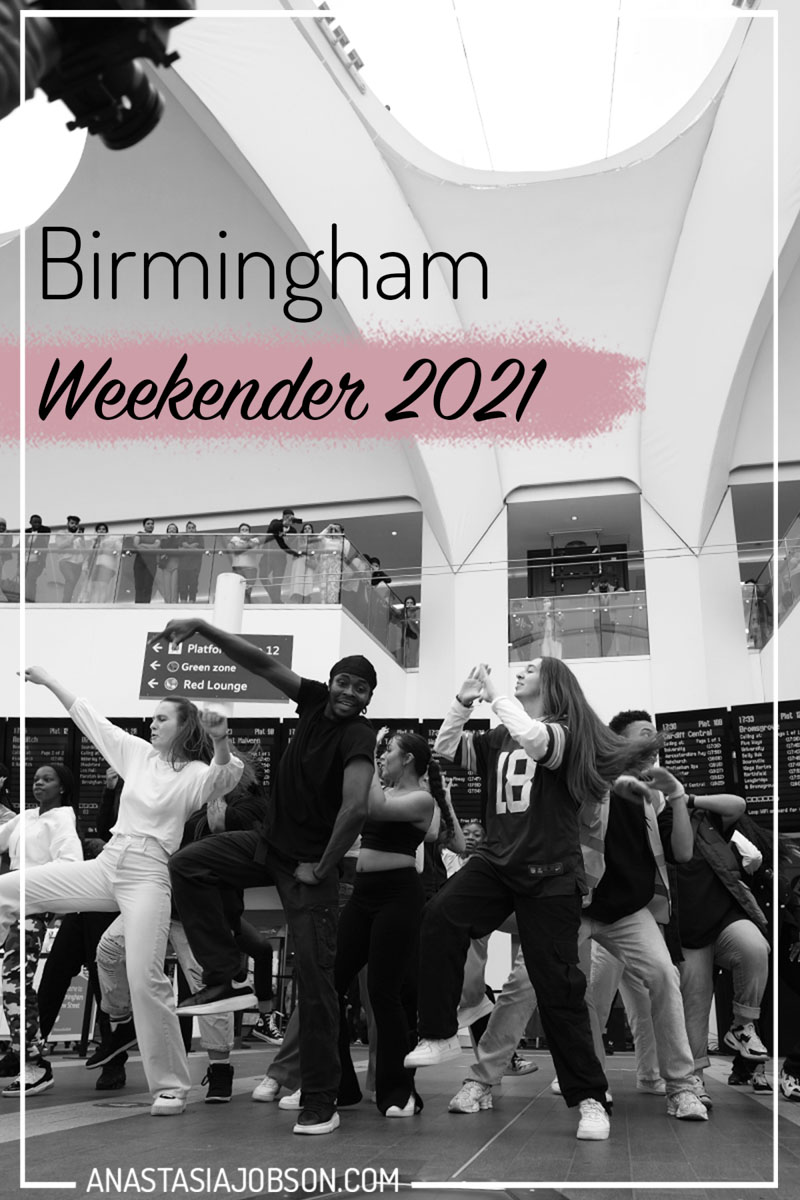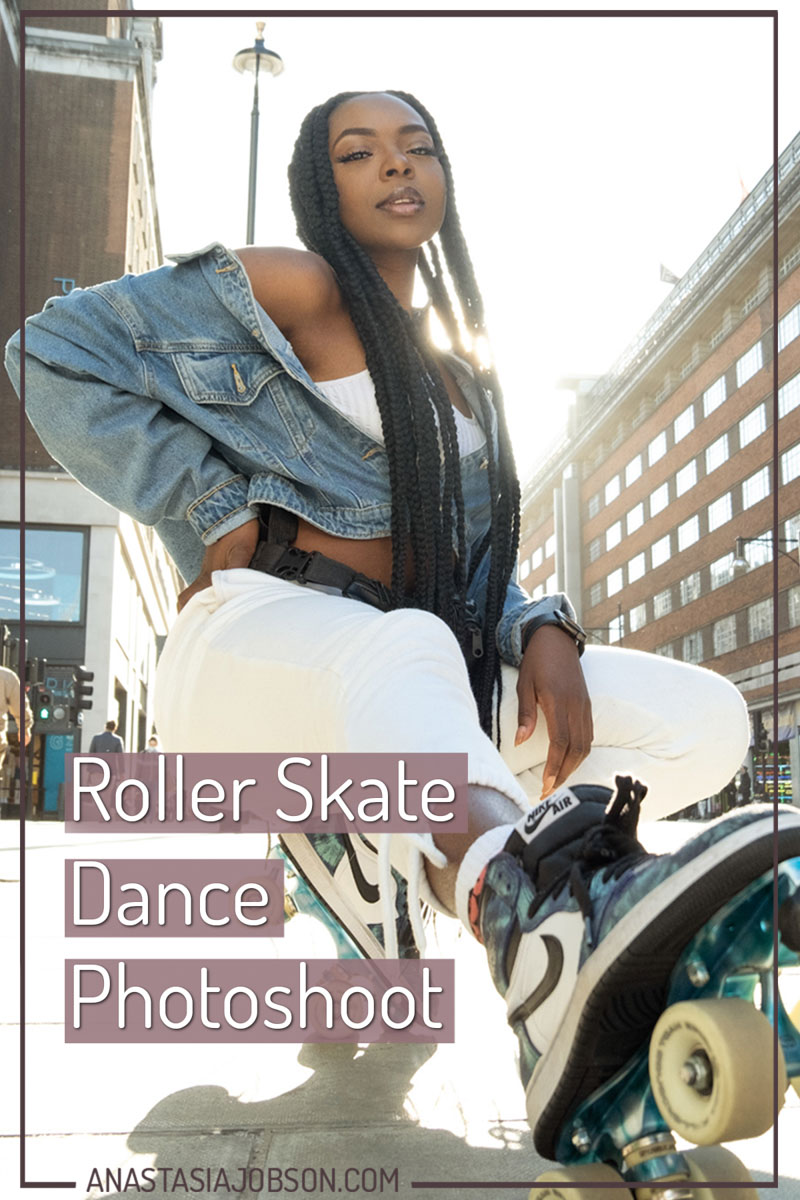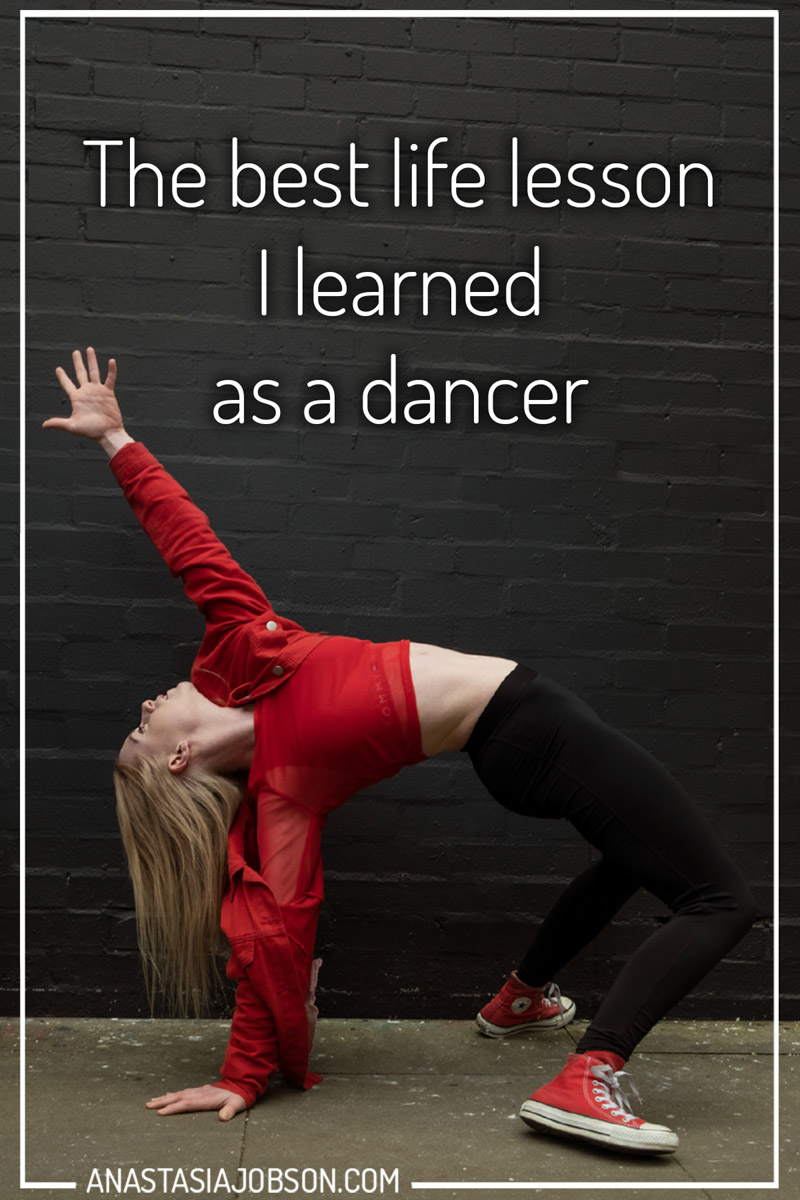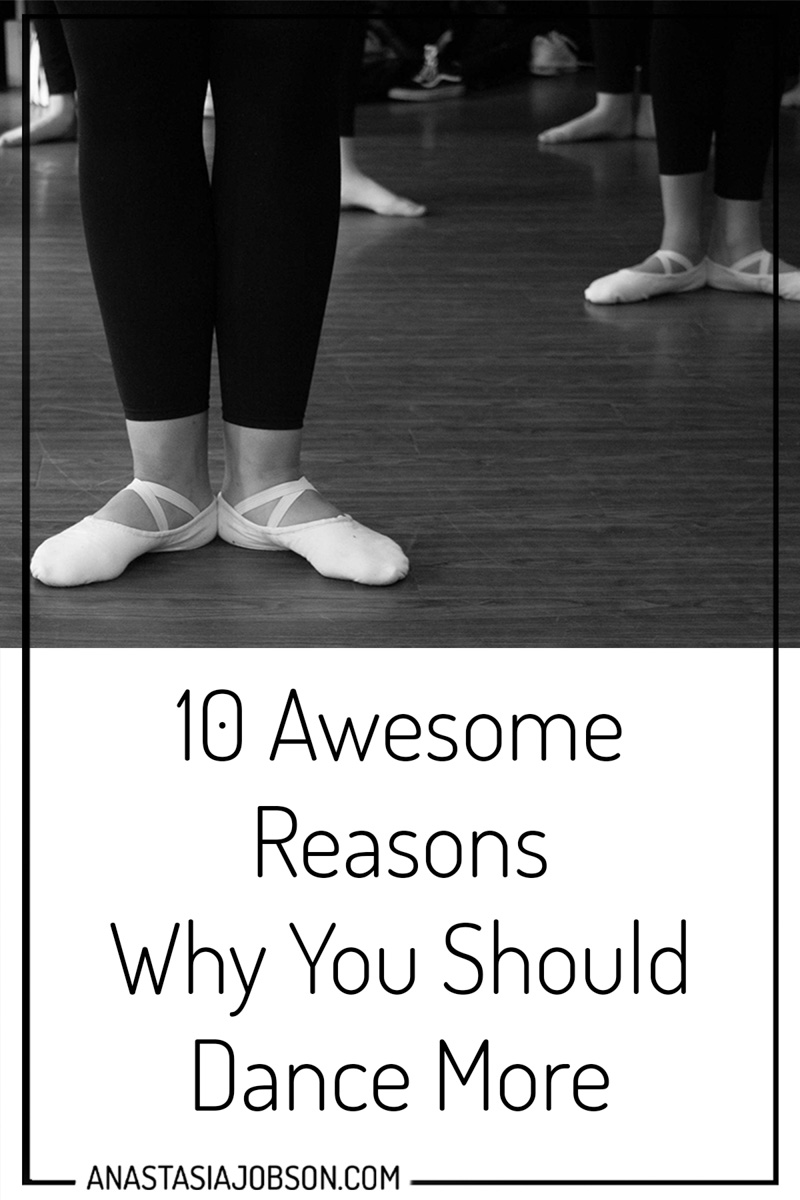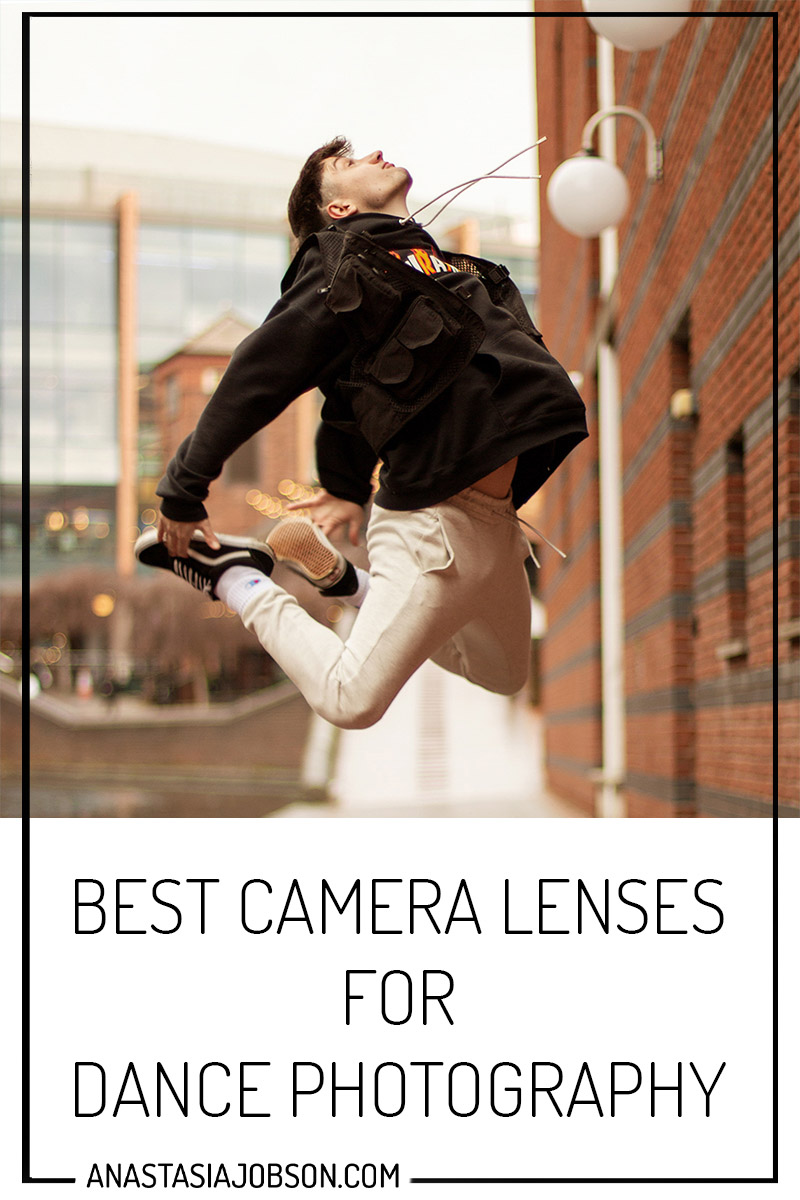
Best lenses for dance photography
Do you want to try dance photography? But you’re not sure what camera lens or lenses are best at capturing movement images you will love? Then you’re in the right place!
There’s no such rule saying ‘only this camera lens is suitable for dance photography and this one is not’. Dance photography is art, which at the end of the day is subjective. Your choice of camera lenses for capturing dance and movement will depend entirely on your preference. Read on and learn about pros and cons of each lens type and examples of photos you would get using them.
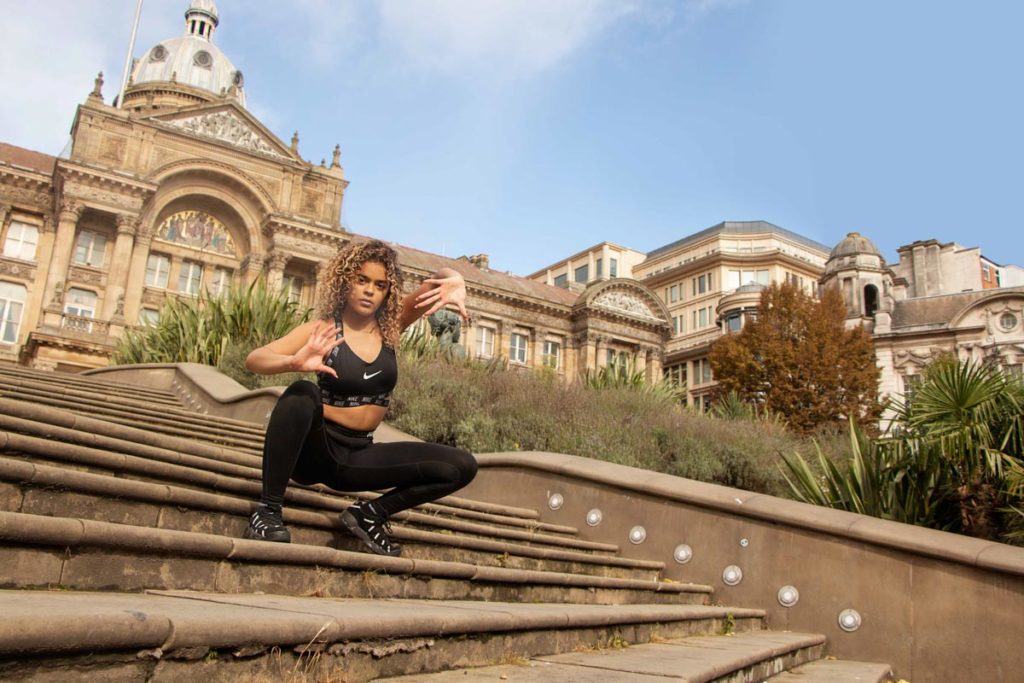
Camera: Canon 70D
Lens: Canon EF-S 18-135mm (at 18mm)
BEST LENSES FOR DANCE PHOTOGRAPHY
WIDE-ANGLE LENSES
+ GET MORE OF THE SCENE IN THE FRAME
For example the image above: dancer Rio at Victoria Square in Birmingham. I wanted to capture the contrast between Rio’s sporty outfit and her street dance movement with exquisite architecture.
+ GET CREATIVE WITH ANGLES AND COMPOSITIONS
Tell your story with crooked lines and dramatic movement. For a moment, forget about photography rules (like shooting portraits from eye level only). Don’t be afraid to change your perspective. Try shooting from above, from below, even tilt your camera slightly if you feel like it!
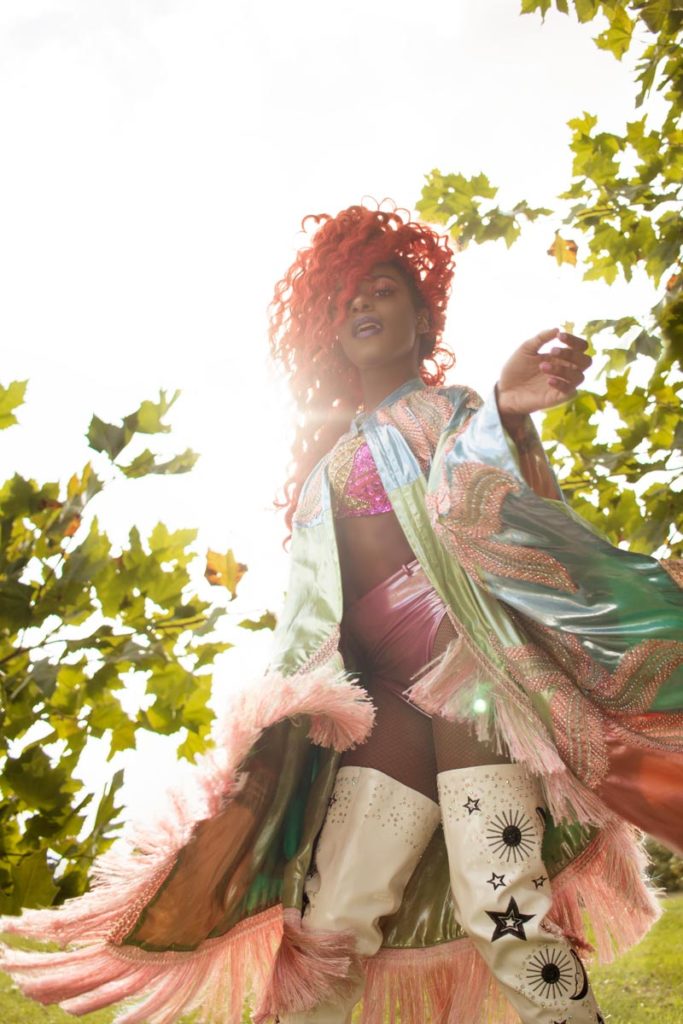
Shot with Canon 70D
Lens: Canon EF-S 24mm F2.8
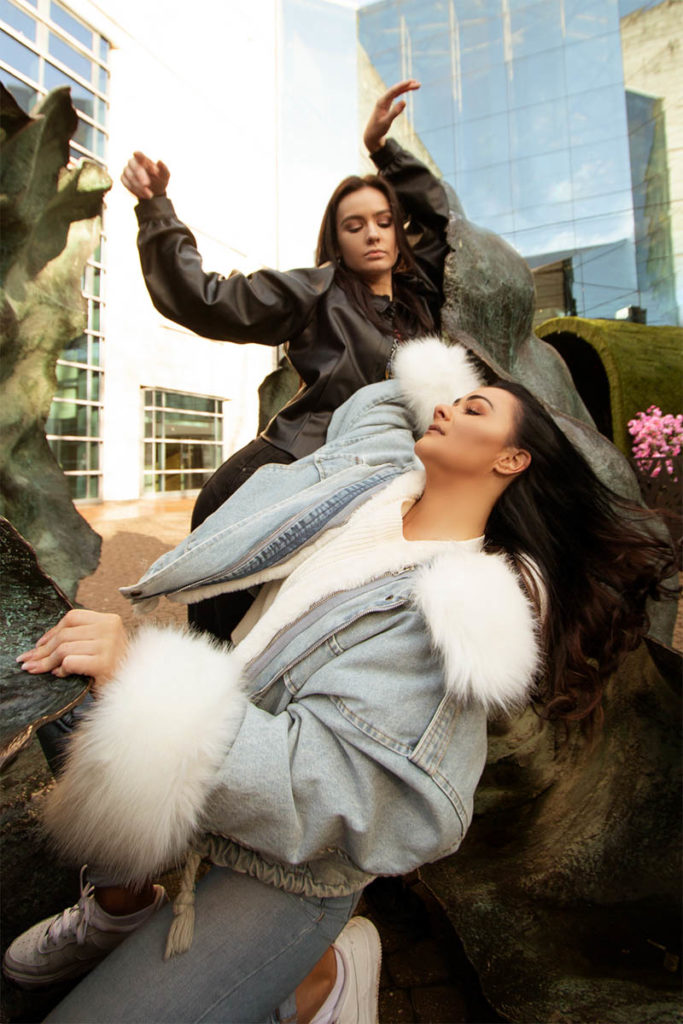
Shot with Canon 70D
Lens: EF-S 10-22mm (at 10mm)
– CLOSE PROXIMITY TO THE SUBJECT
For a dramatic look, you need to be very close to your subject. For example, when I was taking the image above I was right next to the dancers. My foot was right next to Sophie’s (in the front). I used an ultra wide angle lens (10-22mm). Unfortunately, taking images from such a close distance is not ideal during the current COVID-19 pandemic.
– IMAGE DISTORTION
Unless that is the look you’re going for, wide angle lenses give you lots of distortion. You can fix it either in post production, or by stepping away from your dancer and place them in the middle of composition when taking a photo.
TELEPHOTO LENSES
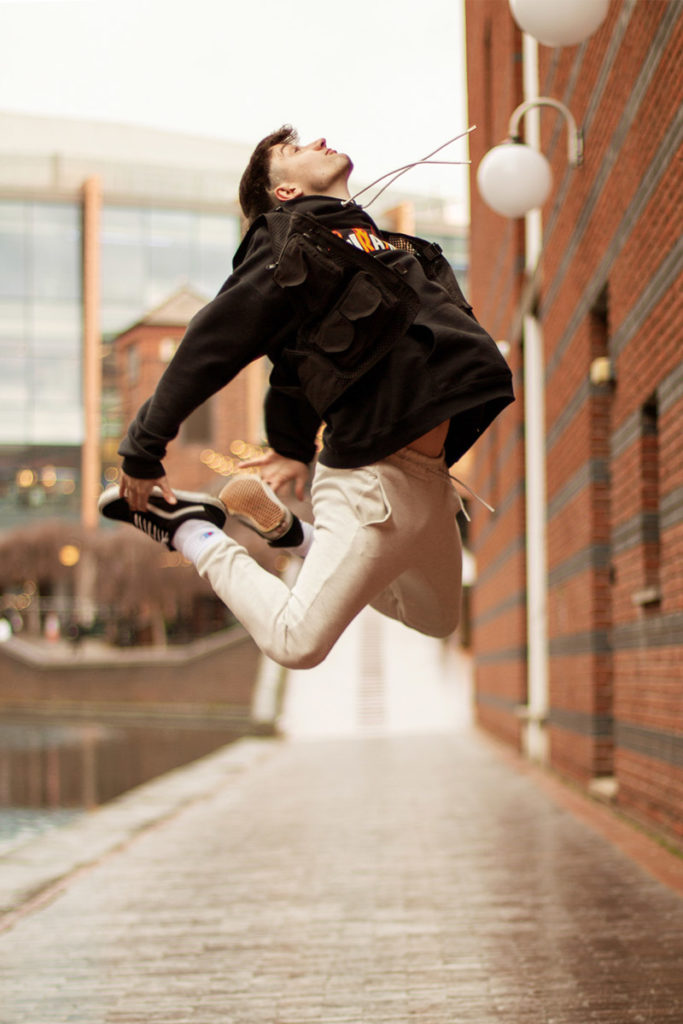
Shot with Canon 70D
Lens: 50mm F1.4
+ SEPARATION FROM THE BACKGROUND
When you shoot at the largest aperture (lower f-stop number) for your lens, you will get a beautiful separation between your subject and the background. The larger your aperture is, or the further away a background is from your subject, the more blur in the background you will get. This brurred background eliminates a lot of distractions and helps your subject stand out, as our eyes will be automatically drawn to to sharpest part of the image – the dancer.
+ GREAT FOR CLOSE-UP DANCE PORTRAITS
Dance action shots or dance portraits are not just about getting dancers’ whole body in the image. Why don’t you capture a dancer’s emotion, in a closer crop of their face? Using telephoto camera lenses you can experiment with compositions and crops while photographing dance. This way you will get a variety of images at the end of your dance photoshoot – not just different dance poses.
+ PERFECT FOR SOCIAL DISTANCING PHOTOSHOOTS
Hello reality of 2020! We need to keep our distance of 2 meters (6 feet apart) which is actually doable with telephoto lenses. Don’t worry about breaking social distancing guildelines and get your dance images at 2,3,5 even 10 meters away!
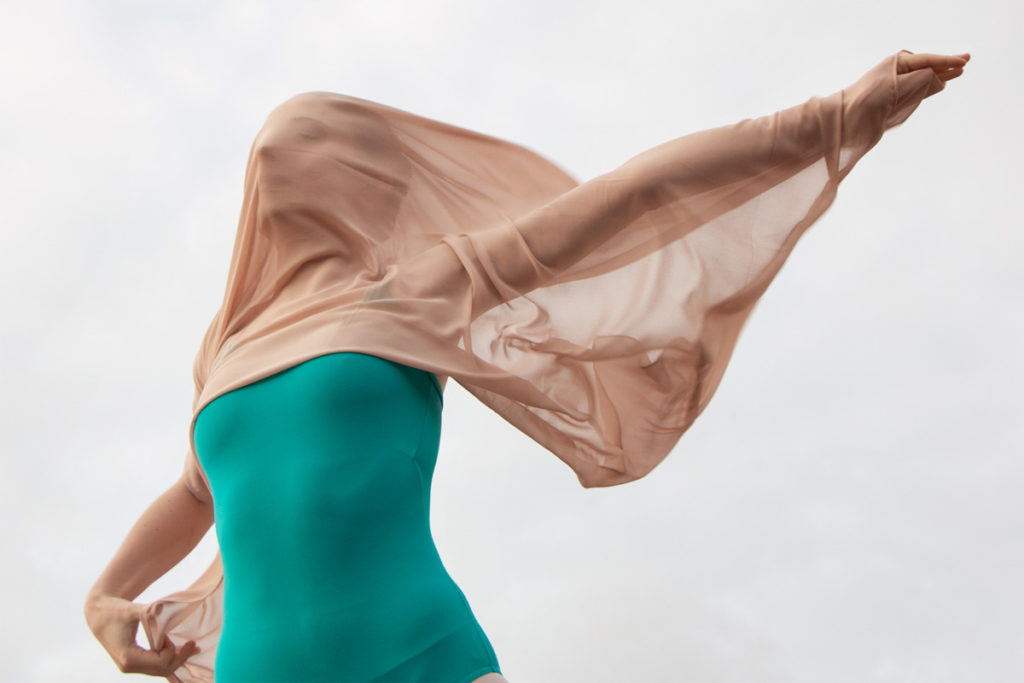
Shot with Canon 70D
Lens: Canon EF-S 18-135mm (at 50mm)
– NOT ALWAYS CONVENIENT FOR STREET SHOOTS
Longer focal lenght means you will need to step further away from your subject. Photographing dance with telephoto lens in a busy street might not be convenient, nor safe. Think about this, standing far away from your subject means you will need to shout directions, or even demonstrate some poses yourself. Make sure you’re shooting somewhere away from transport, as shooting on the road can become danegrous especially being far away from each other (with your subject).
– NOT SUITABLE FOR SMALL OR HOME STUDIOS
Home photo studios are generally small. You could make slightly more room by moving your furniture and clearing some space. The reality is that extra space won’t magically create itself. If your camera lenses focal lenght is too long there might not be enough space to step back. Wide angle lenses on the contrary, will be the best choice for dance photography in a small studio – you can ‘create’ extra space around your subject instead of stepping back.
PRIME VS. ZOOM LENSES FOR DANCE PHOTOGRAPHY
PRIME LENSES
While zoom lenses are handy, (saving you time switching between camera lenses) sharpness is not as distinctive like with prime lenses. Convenience of zoom lenses have another price – sacrificing larger aperture and creative blur (while prime lenses’ f-stop goes as low as F1.2/F1.4, zoom lenses f-stop range starts from F2, F2.8 or F4).
Also, prime lenses are generally faster. As they let more light in the camera with larger aperture, they let you keep faster shutter speed even in lower light settings. Fast shutter speed is a must when it comes to photographing dance and movement. That’s why you should consider primes for dance event/performace photography especially if it’s indoors.
ZOOM LENSES
If convenience is a priority for you and you prefer zoom lenses over primes, the main thing to remember is keeping your shutter speed high. So you will need to boost your ISO quite a bit in order to freeze movement in a darker setting.
I would recommend using zoom camera lenses when you’re doing an outdoor dance photoshoot. There’s usually plenty of natural light available photographing outdoors during the day. You can also use zoom lenses for photographing dance when you are in control of the light – adding speedlight or strobes to the scene.
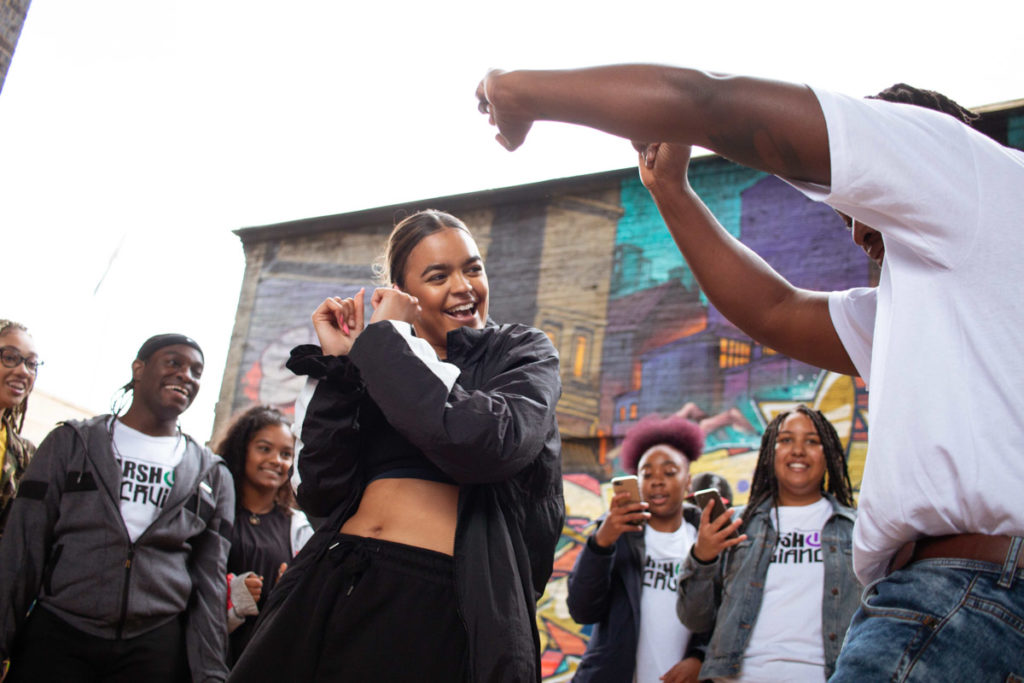
Shot with Canon 70D
Lens: Canon EF-S 24mm F2.8
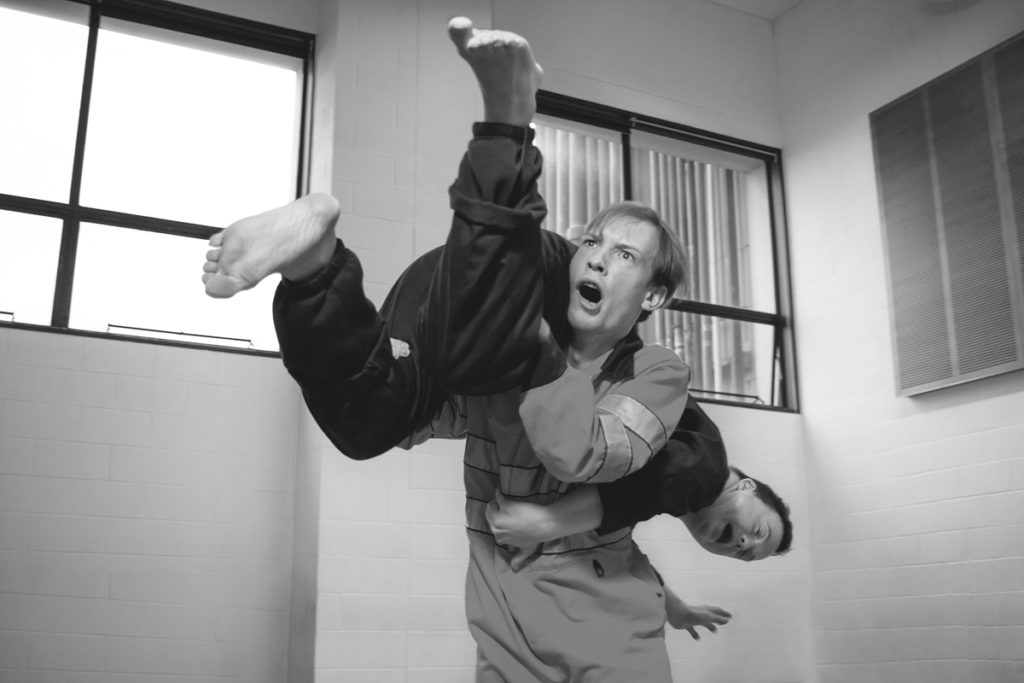
Shot with Canon 70D
Lens: Canon EF-S 24mm F2.8
I have been a dance photographer for about 2 years now. During this time I have conducted lots of experiments, and I will be honest, a wide angle lens look for dance and movement images is my favourite! About 80% of my work is captured at the widest focal lenght I have (18mm on APS-C which is equivalent to 27mm). I love a quirky character in my images. Wide-angle lens is my go to when I’m photographing dancers on location outdoors. When I’m shooting dance events and performances I go for a 50mm 1.4 on my crop sensor DSLR (equivalent to 85mm focal lenght). It’s fast enough to capture movement even in the darkest of settings.
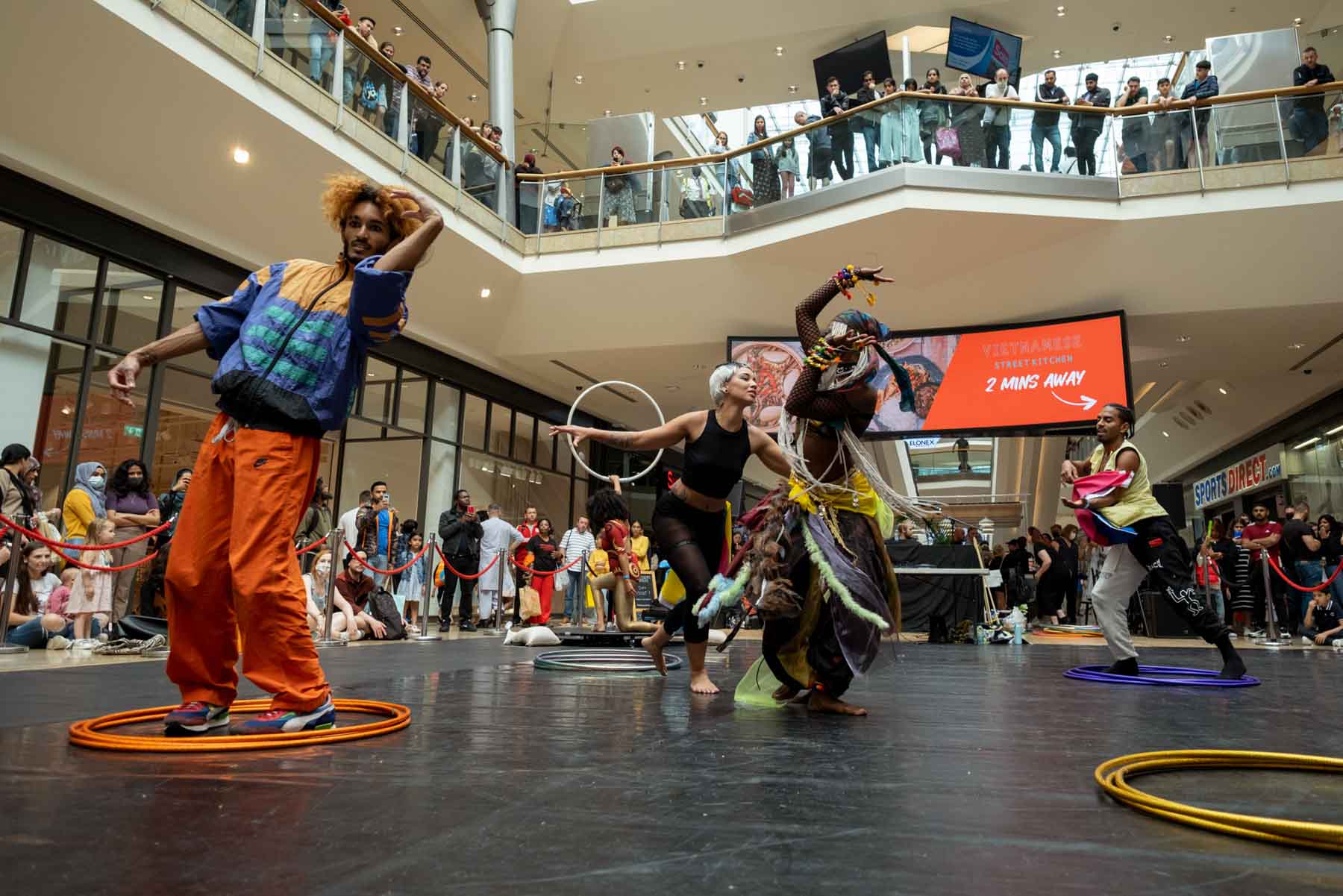
Shot with Fujifilm XT-4
Lens: XF 14mm F2.8
Best camera lenses for Dance performances and dance events
Low light performance
Very often, dance shows and performances take place in darker, and more dramatic environments. Dramatic lighting makes a show look more visually striking, though it doesn’t do justice to a photographer capturing it. Unlike a dance photoshoot, we, photographers, have no control over lighting conditions when it comes to events.
Faster prime camera lenses (with aperture as wide as F1.4 or F1.2) for dance performances definitely have an advantage over lenses with aperture number of F2.8 and higher. The wider you open the aperture, the more light hits a camera sensor, thus you will need lower ISO. As we all all know – with lower ISO there’s less noise or grain in the final photos. Faster lenses don’t just let in more light, but also give you a nice separation of the dancers from the background.
Depending on a camera model you use (full frame vs crop sensor camera), the highest ISO you can use without causing grain will differ. For instance, using my old Canon 70D I can only go up to ISO 800 without having noticeable grain (with ISO over 2000, the images are falling apart – there’s no detail in the dark parts of the image); when I use Fujifilm XT-4 I can comfortably raise my ISO up to 2000-2500 without loosing much detail.
Fast focusing
This is the latest photography lesson I’ve learnt — don’t buy a new piece of gear without doing a thorough research and comparison with similar products.
For dance performances and events, you want to make sure your camera lenses’ auto focus (AF) is fast. With dancers moving closer and further away from your camera, you need your lens to be able to focus and re-focus fast.
To illustrate, Fujifilm lenses range has 50mm F2 and 56mm F1.2; similarly 35mm F2 and F1.4; and 23mm F2 and F1.4. Basically there are 2 options for the same (or similar) focal length. You might be thinking that the faster option is better – better glass, faster aperture (low light performance). However, in order to get the better low light performance, you pay the price of a slower AF (auto focus). If you want to learn more about differences between Fuji lenses, here’s an awesome video that taught me a lot.
The AF speed might not be a great difference for you, though it’s driving me crazy how slow ‘fast aperture’ Fuji lenses are in comparison to the cheaper alternatives (23mm F2; 35mm F2; 50mm F2) when photographing dance performances and events. You can see some examples of dance performance photography using Fujifilm lenses in my previous blog: Birmingham Weekender 2021. While 56mm F1.2 gives the most beautiful bokeh, I missed focus so much more than while using 35mm F2, which snaps focus perfectly in just a fracture of time compared to the 56mm.
Do your research, I would even recommend to hire camera lenses before you buy to see what works for you. Buy or Hire? A Photographer’s Guide to Gear might be helpful to read.
If you want to learn more about dance photography, you’ll find my other blog posts such as How to Photograph Dance: Camera Settings and How to Photograph Dance: Posing Dancers useful. Feel free to check them out!
This is all for today. I hope you found this week’s blog useful. Which lens or lenses do you find the best for dance photography and why? Let me know in the comment section below.
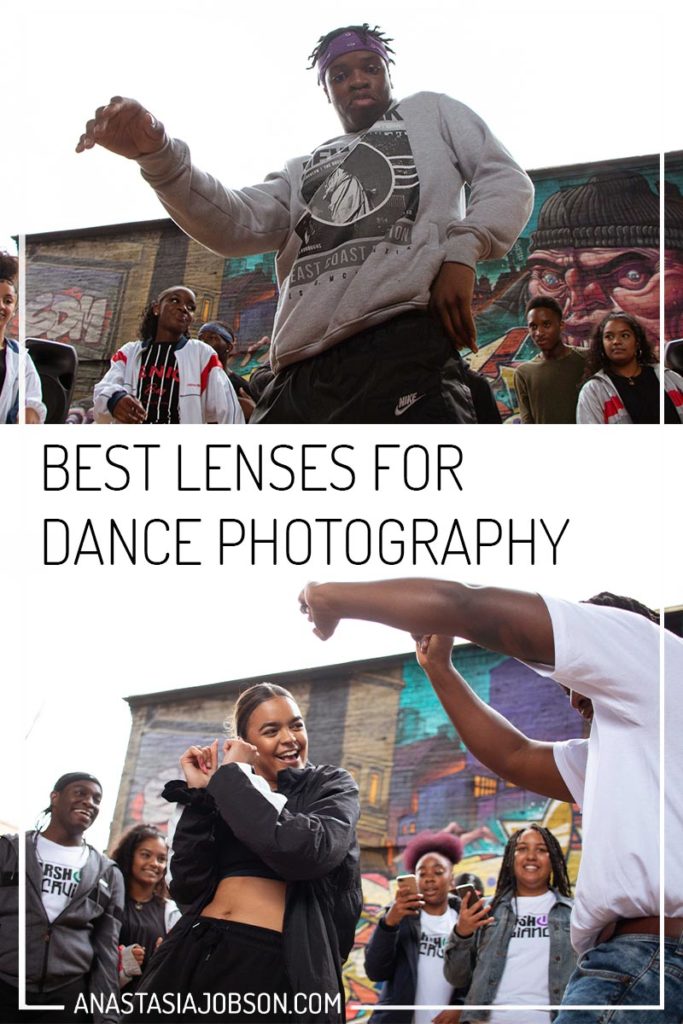
Sorry, the comment form is closed at this time.
